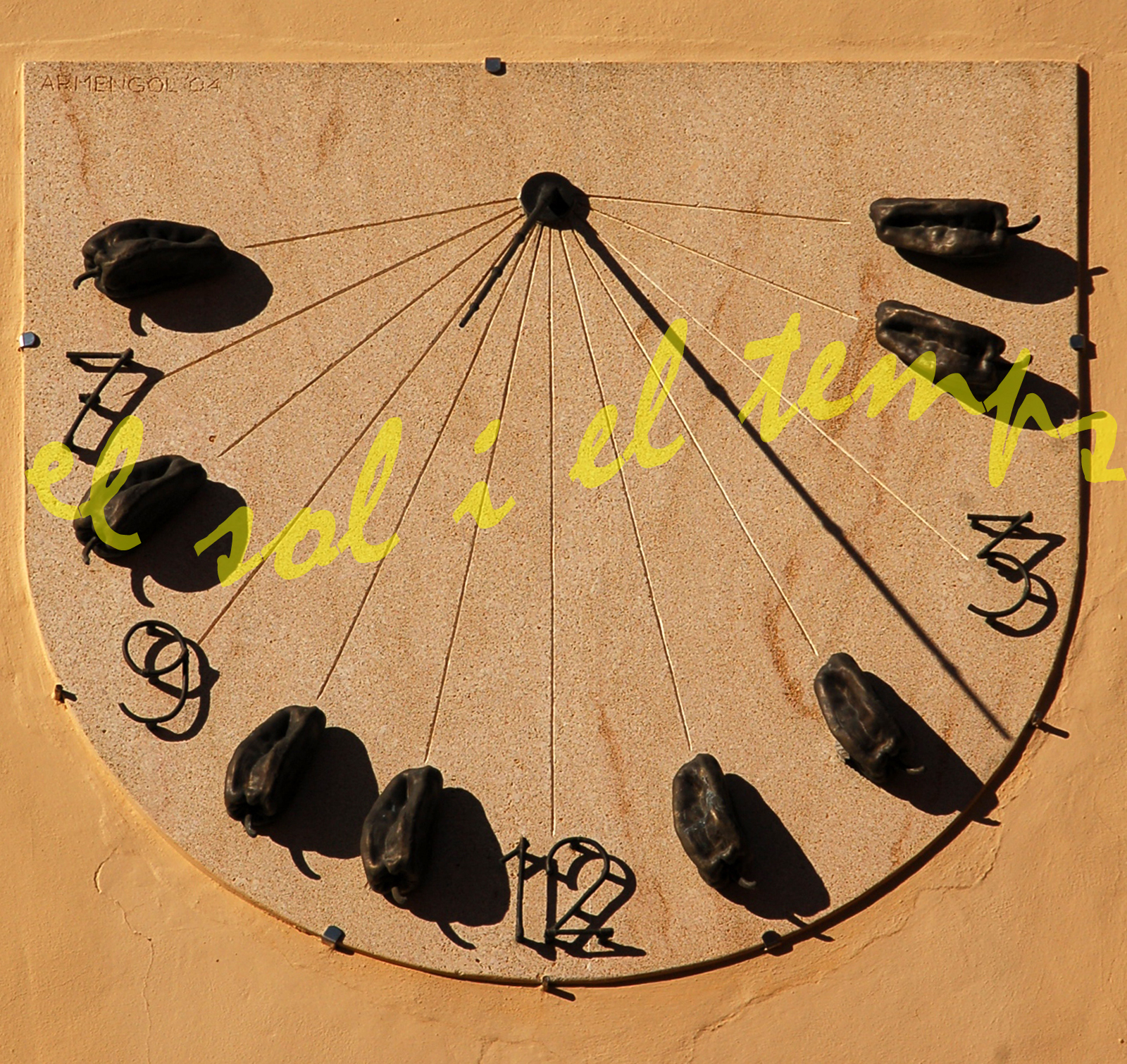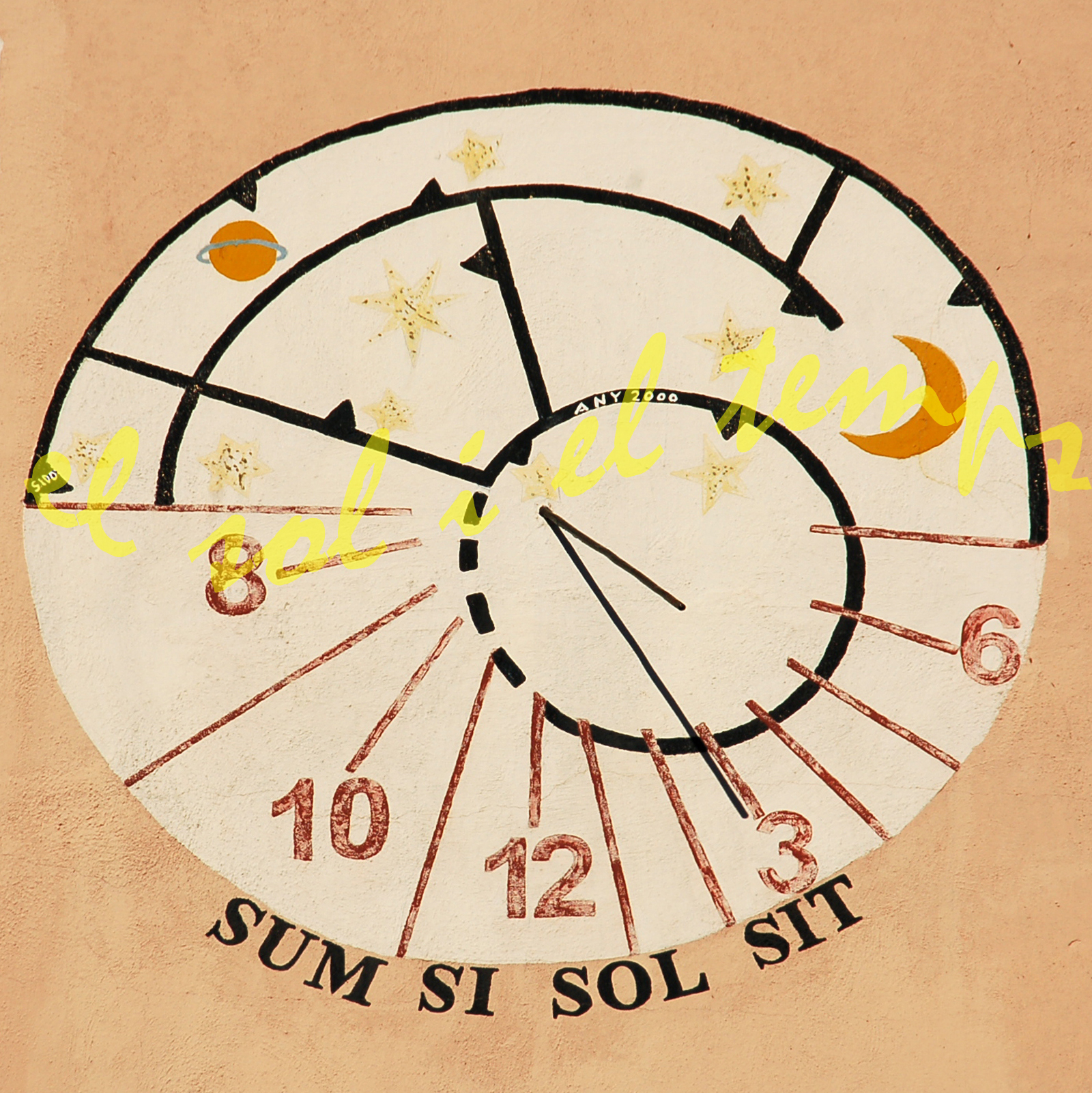|
Sundials in the Vall d'Albaida (Valencia)
Albaida Valley is a natural and historical region nestled in the Valencian Community. Limited geographically important regions such as in "The Coast" and "Safor" in the province of Valencia "Alcoyano", "County" and "Sax" in the province of Alicante. The climate of the valley is the type mediterranillevantí. Thirty-four are the municipalities of Albaida Valley. The region has a population of over 85,000 and over 33,000 Ontinyent serves as the capital itself. It is one of the most industrialized Valencia region, an important textile tradition though, the presence of agricultural and livestock activities is remarkable. We also observed an increase in the tertiary sector.
Regarding communications say that the north entrance to the county to have the CV-40 in the form of highway, this arises from the N-340 and passes Ayelo Malherido of Ontinyent, needles and Benissoda, joining the N-340 road to Alcoy. The CV-40 sets out the CV - 60 that brings us Montaverner, Montichelvo's later in the neighboring region of La Safor. An extensive network of roads linking all Albaida Valley. The N340 was parallel to the CV -40 • Drop through the towns of Bellus, Guadasequies, Alfarrasí, Montaverner, Palomar, Albaida later in Alcoy. The railway station has Alcoy and Valencia stops in the region being the most westerly of them Ontinyent. Regular lines of bus-Alcoy and Valencia Valencia -Villena cross almost all locations in the region. The rich and exciting cuisine, natural, artistic and cultural activities along with sports and adventure that travelers will enjoy the visit to these lands.
The need to quantify the time is a historical constant. Archaeological Remains of more than 20,000 years with obvious signs of temporary counts. Later this need has led to the invention of various devices including clock has a role in any of its forms and mechanisms, but especially in the form of sundial, which is that for thousands of years been the most reliable and used.
In antiquity is designed and built several models of sundials meet the needs of various types of measurement systems and schedules. Thus, until the fourteenth century, used different durations of a few hours in the winter and in the summer (temporary). The use of the same length times the Arabs introduced in Europe and was made possible by the invention of the sundial gnòmom East, which is what you got today.
Although the date of the first mechanical clocks down. XIV, it was not until the s. Eighteenth achieve sufficient accuracy to replace sundials in the towers of churches and public buildings. However, sundials still lasted well into the twentieth century in rural societies, such as Albaida Valley. For over five centuries, craftsmen quadranters (builders sundials) came across our land, leaving a beautiful testimony to the human need to measure time and at the same time, his aesthetic ideal through the decorative and artistic forms, and their vital concerns, through various philosophical slogans that are used to add.
Albaida Valley is an area in lavish sundials. In the catalog produced in 1998, it reviews 120 different states of preservation. Currently some have disappeared, but others have been restored and have been built new. Among the restored cite the City Council Ollería the bell Montaverner and the Palace of Otos. Among those who have new types of monuments as the highlight of the Astros Palomar Park, the park of mulberry Benissoda, the Avenue of the Ortissa Benigánim the Park Salem of the Otos and Sports of the last made by the project cultural tourism "Otos Sundials of the people." In all these aspects are present anthropological, educational and art combine so well through these instruments. Despite the evidence that sundials are part of our popular culture and our scientific and artistic tradition, this huge and unique resource has been forgotten and neglected for many years. Elprojecte "Otos, the people of Sundials" and "Route Sundials to Albaida Valley" seek to arouse the interest of institutions and individuals in the preservation of sundials while creating a network of gnomon routes through Albaida Valley.
From the Association of Municipalities of Valle Albaida want to thank the inspiring path of this county of sundials, Rafael Olivares and John Loving the work done and basically make us discover and direct our eyes to this wonderful tourist and cultural resource. We also want to thank all those men and women who have made this tourist route.
The route of sundials have divided into two routes that collect most of the watches available in the region in combining both historical clocks, newly created and those who have just been restored. Both routes end Otos where we have a large presence of sundials and the whole gnomon "Otos town of Sundials".
Route map

|












